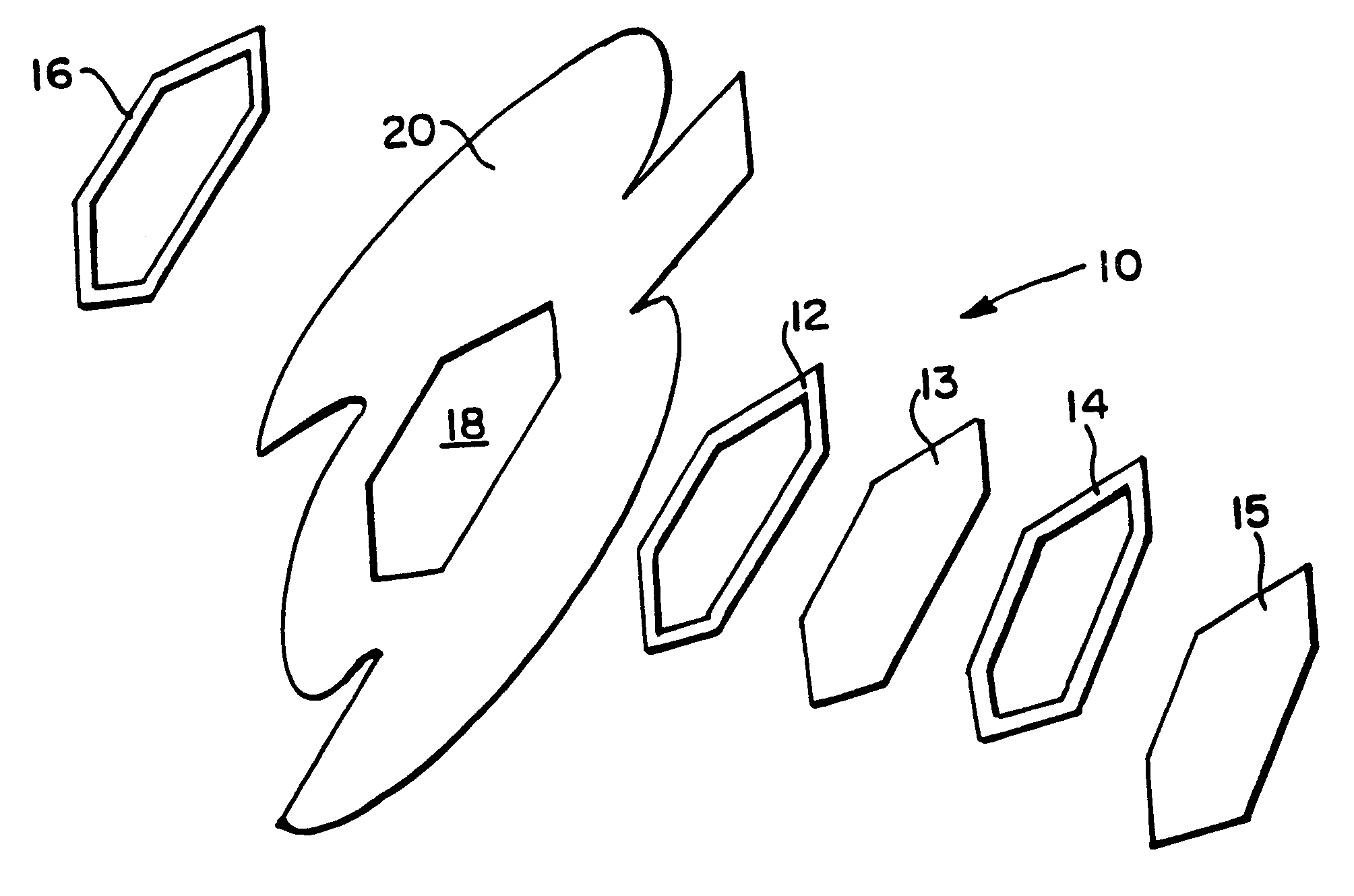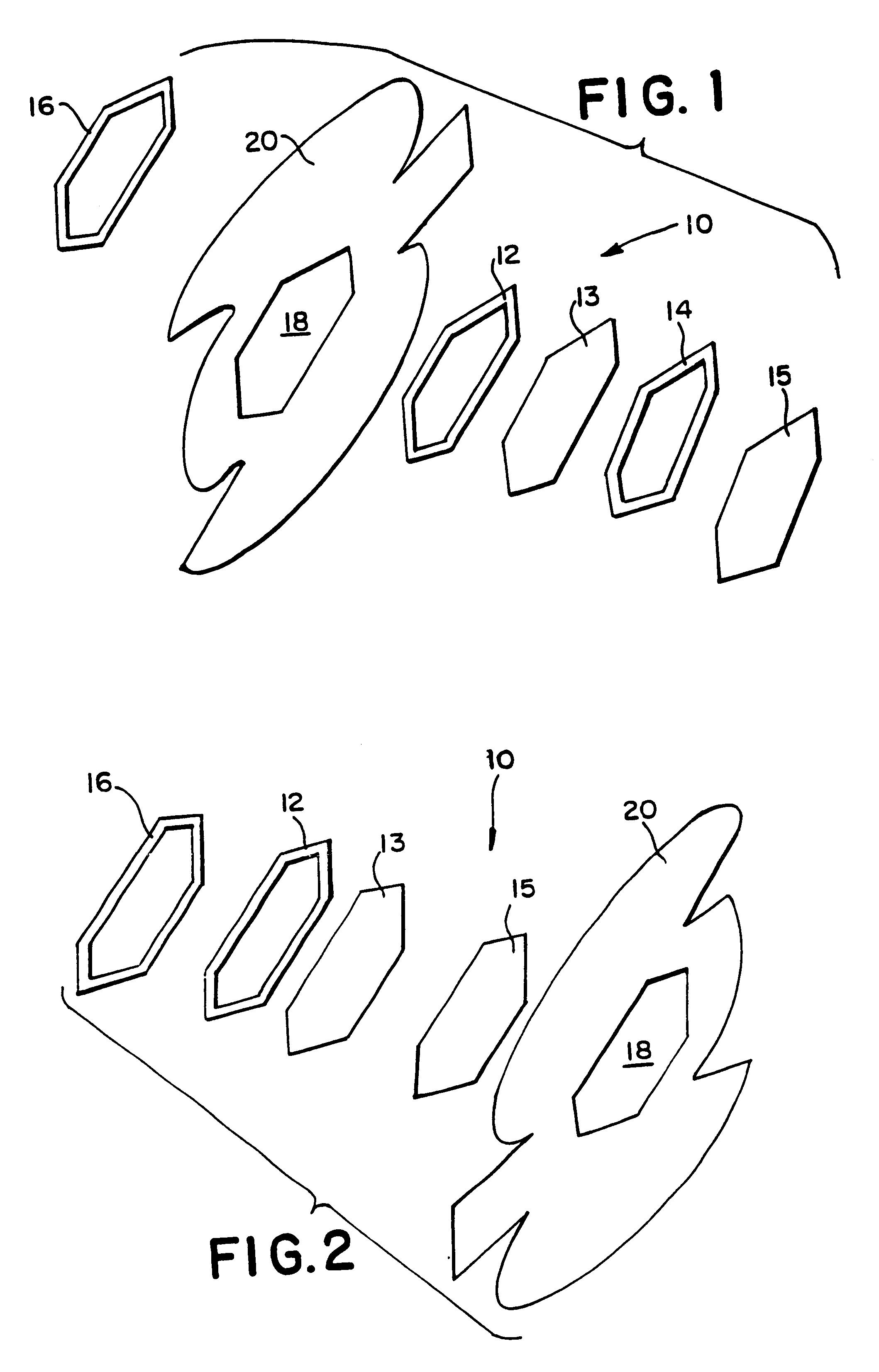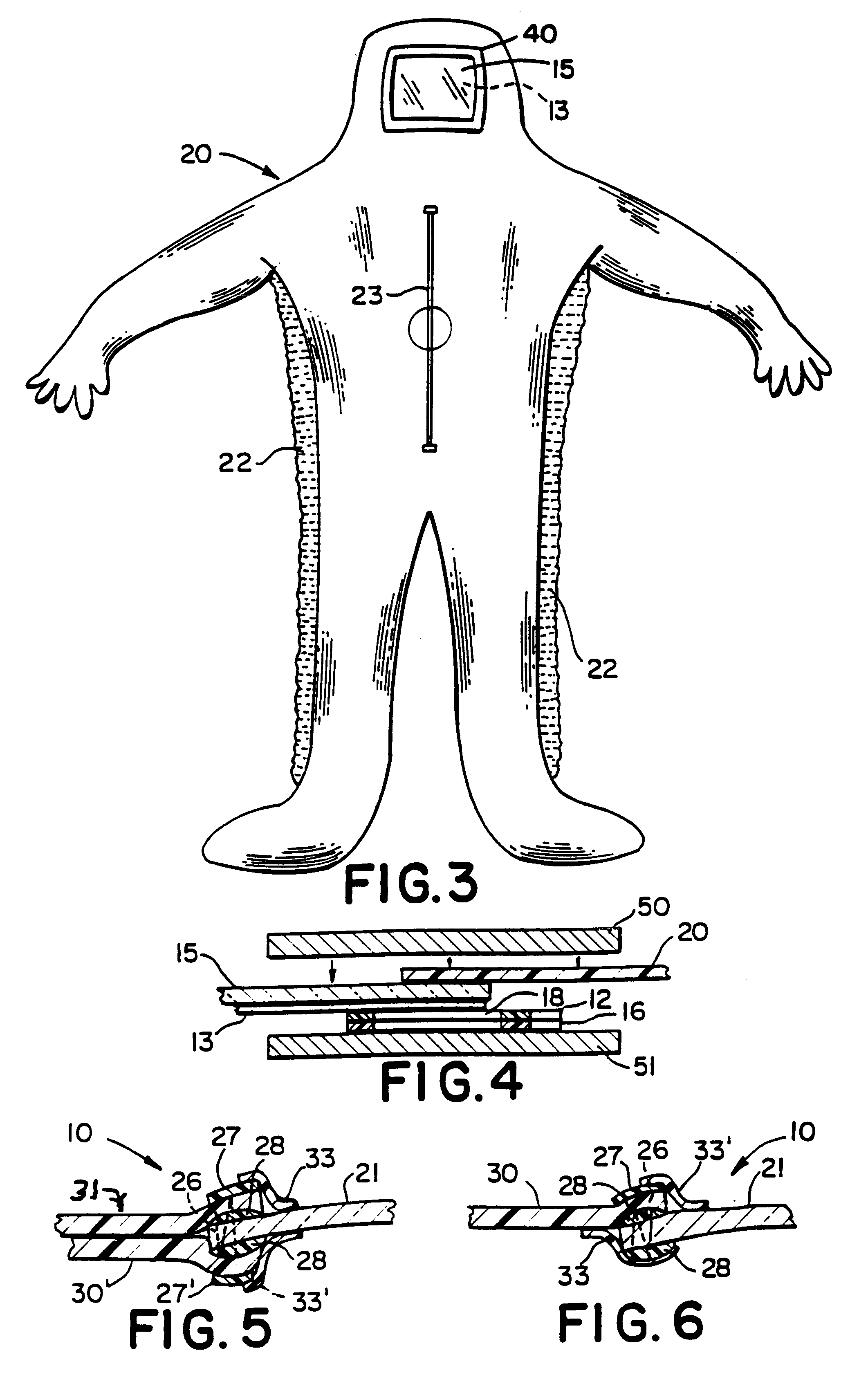Hazardous environment protective garment having a fusion bonded optically transparent facepiece with chlorinated polyolefin seams
a technology of chlorinated polyolefin and protective garment, which is applied in the direction of chemical protection, transportation and packaging, synthetic resin layered products, etc., can solve the problems of weak seams, needle holes, and difficult sealing problems
- Summary
- Abstract
- Description
- Claims
- Application Information
AI Technical Summary
Problems solved by technology
Method used
Image
Examples
example 7
is a chart comparing the bond strengths of the present invention versus conventional products, Exxon Escor ATX-350 and ATX-140 and Dupont Nucrel 360. The Exxon products are acid terpolymers, while the Dupont product is an ionomer of ethylene and methacrylic acid.
example 1
One film having a polyethylene surface is placed on top of a solvent-cleaned CPE layer with an approximate thickness ranging from twenty to forty mils. A solvent-cleaned PVC film (such as a zipper segment) is placed beneath the CPE layer, and a polyurethane coating is optionally applied to the PVC film before placement. Once completed, the film composite may optionally be sewn together or sewn to a scrim.
example 2
One film having a polyethylene surface is placed on top of a solvent-cleaned CPE layer with an approximate thickness ranging from twenty to forty mils. A chemically treated (Tetra-etch.RTM.) polytetrafluoroethylene type film is placed beneath the chlorinated polyethylene CPE layer, and a polyurethane coating is optionally applied to the Teflon film before placement. Once completed, the film composite may optionally be sewn together or sewn to a scrim. Tetra-etch.RTM. is a sodium naphthalene / ethylene glycol dimethyl ether complex marketed by W.L. Gore & Associates, Inc., Flagstaff, Ariz.
PUM
| Property | Measurement | Unit |
|---|---|---|
| thick | aaaaa | aaaaa |
| temperature | aaaaa | aaaaa |
| temperature | aaaaa | aaaaa |
Abstract
Description
Claims
Application Information
 Login to View More
Login to View More - R&D
- Intellectual Property
- Life Sciences
- Materials
- Tech Scout
- Unparalleled Data Quality
- Higher Quality Content
- 60% Fewer Hallucinations
Browse by: Latest US Patents, China's latest patents, Technical Efficacy Thesaurus, Application Domain, Technology Topic, Popular Technical Reports.
© 2025 PatSnap. All rights reserved.Legal|Privacy policy|Modern Slavery Act Transparency Statement|Sitemap|About US| Contact US: help@patsnap.com



